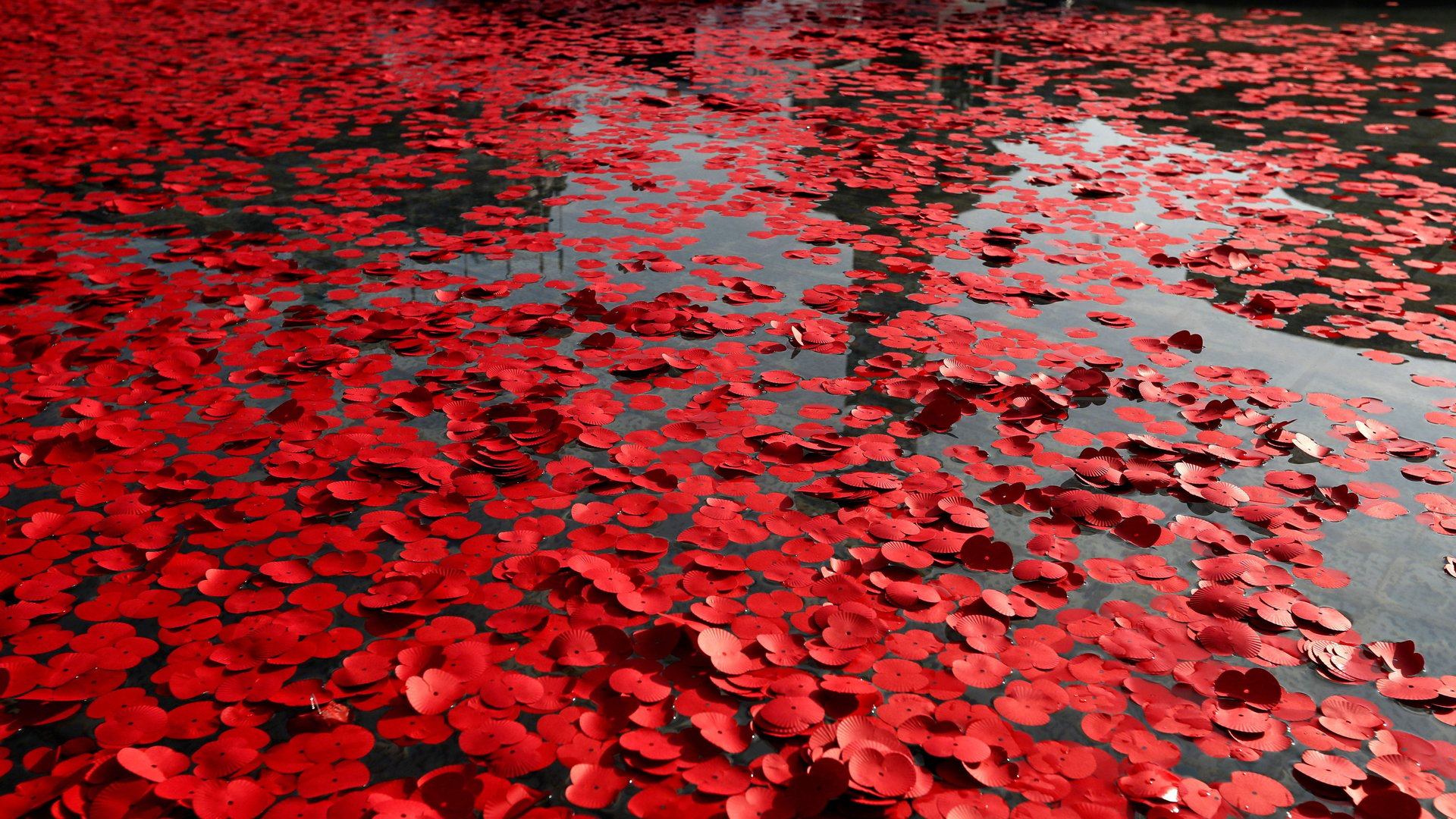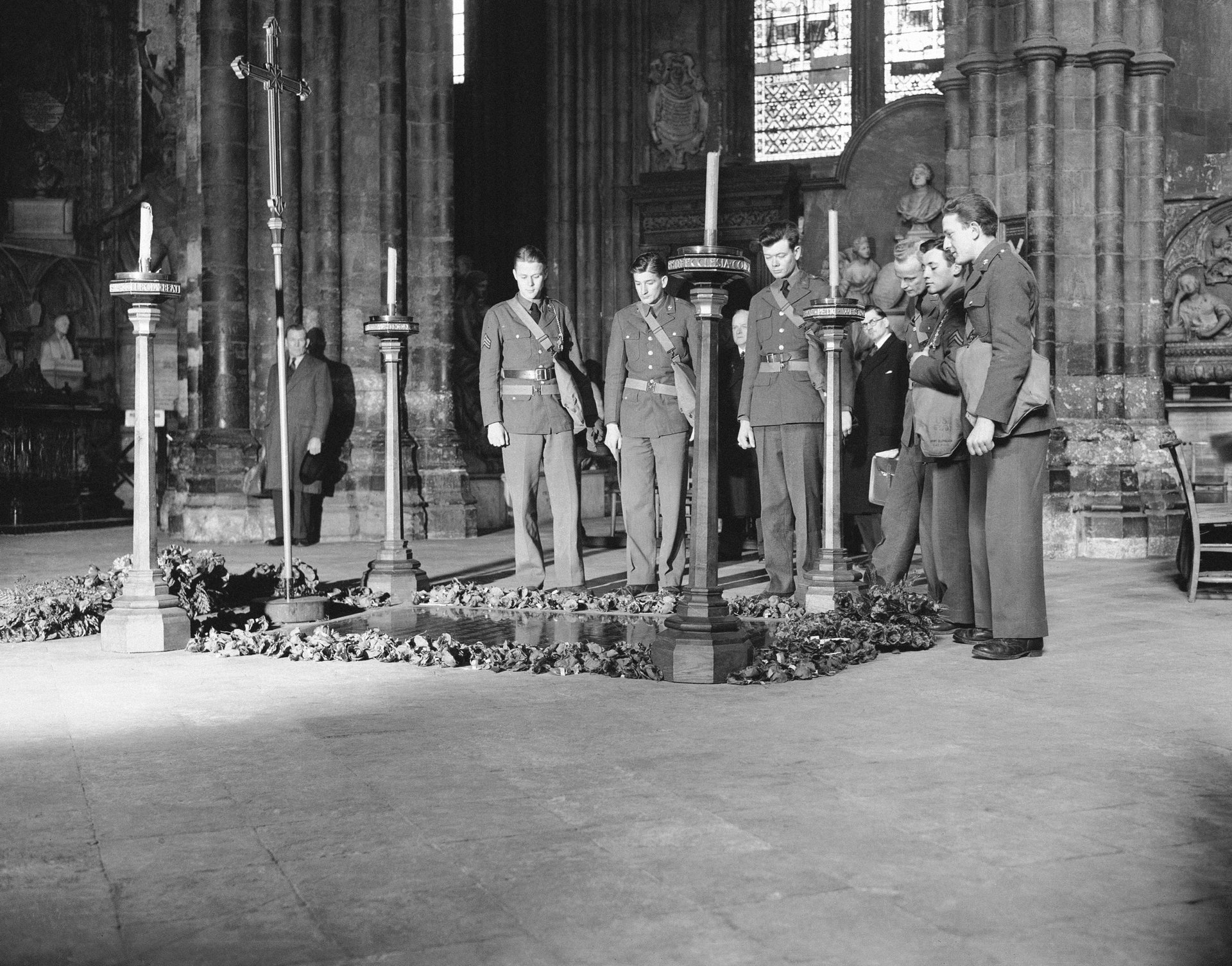What the first Unknown Soldier, buried after World War I, taught us about grief
In November 1920, Europe was still reeling from the huge war that had ended just two years earlier—100 years ago this week. World War I left 17 million dead, more than any single conflict in history. Britain alone lost a million people, mostly men, many of them young. Hundreds of thousands had not been identified. It was still possible, in 1920, to hope that your son might walk through the door one day—that he had lost his memory, or had been recovering in some out-of-the-way place. That he wasn’t dead; he just hadn’t yet made it home.


In November 1920, Europe was still reeling from the huge war that had ended just two years earlier—100 years ago this week. World War I left 17 million dead, more than any single conflict in history. Britain alone lost a million people, mostly men, many of them young. Hundreds of thousands had not been identified. It was still possible, in 1920, to hope that your son might walk through the door one day—that he had lost his memory, or had been recovering in some out-of-the-way place. That he wasn’t dead; he just hadn’t yet made it home.
It was in this environment that the UK held a huge, unprecedented funeral service for a nameless man. The unidentified solider was brought back from the battlefields of France, carried past huge crowds on the streets of London, and buried in Westminster Abbey, where British monarchs are interred. He remains today there today, a sword by his side, his final resting place visited by hundreds of thousands each year.
Cenotaphs—empty coffins used to commemorate “the missing”—had long existed, with early accounts from ancient Greece of symbolic burials after battle providing a focus of mourning for those whose relatives were never identified. In post-World War I Britain, it was David Railton, a battlefield chaplain, who first suggested the idea of actually burying an unknown soldier, and Herbert Ryle, the Dean of Westminster, who brought it to fruition.

The process for selecting a solider was complex. To ensure anonymity, four bodies were exhumed from four of the major battlefields in France. They were laid on stretches and covered, whereupon a delegate—Brigadier General L.J. Wyatt—chose one at random. The body was brought back to the UK in an unmarked coffin. No one knows who the Unknown Soldier is, or where he died. The French, simultaneously but separately, selected an unnamed warrior in a similar way for their own memorial.
The ceremony has since been replicated all over the world. It is powerful because it acknowledges that grief craves specifics. The human mind isn’t geared up to comprehend, let alone to mourn, the loss of millions. But those who lost brothers, husbands, fathers and sons needed to mourn for them, even if their bodies had never been found.
The power of specificity is why the names of the September 11 victims can feel so impactful when listed one-by-one. It’s why the desperately sad photographs of Aylan Kurdi, a three-year-old boy who drowned with most of his family trying to reach Europe from Syria in 2015, produced such intense reactions, despite our knowledge that refugees and migrants, including children, were dying every day in similar circumstances.
Prior to World War I, conflicts had been celebrated by the victors with public honoring of leaders. But the late 19th and early 20th centuries had seen massive developments in democracy, science, technology, and the understanding of psychology, which fundamentally changed both conflict itself, and how we dealt with its aftermath.
The “Great War” created a “crisis in mourning,” writes Laura Wittman, associate professor of French and Italian at Stanford, in her book The Tomb of the Unknown Soldier, Modern Mourning, and the Reinvention of the Mystical Body. The “tension between official history and local or personal interpretations of the war experience was exacerbated by the unprecedented scale of human loss…which many felt was absurd and traumatic to the point that it could not be ‘understood’,” she writes.
The first Unknown Soldier, tried to explore “something that Western culture could no longer interpret adequately,” Wittman writes, a grief that was resistant “to narrative, psychological, or redemptive closure.”
The Unknown Soldier was also an indication that the world was changing from a place that valued leaders, to one that valued individuals—at least in theory. Not everyone saw it that way at the time. The huge, august internment at Westminster was a coup de théâtre for a church hanging on to its precarious station in an increasingly secular world. Contemporary critics attacked the ceremony for glorifying war, attaching a phony patriotism to a dead man who could not object to it, and attempting to force a heroic, meaningful narrative onto mass death that was horrific precisely because it was pointless.
The event captured the public imagination, however, and was repeated across Europe and in the US soon after. Wittman points out that the popularity of such monuments has endured, but the stories we tell about them changes, depending on who is looking. As an example, the same unknown soldier memorial co-opted by Mussolini in 1930 for his own patriotic purposes was used to mourn dead soldiers and civilians of the Iraq war. The Unknown Soldier is at once both cathartic and disquieting, because it is a blank canvas. We can imprint it with our own need to mourn, but also with our own agenda.